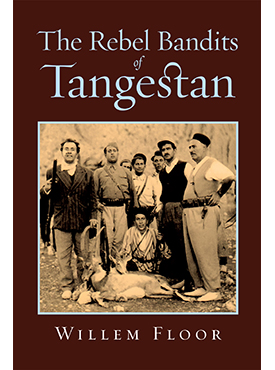About the Book
The hinterland of Bushehr on the Persian Gulf—Tangestan, Borazjan, Dashti, and other districts—was populated by a disparate and poor people, who were at constant war with each other. It was not only neighbors who fought and preyed on each other, but also close family members, and even fathers and sons. The traditional chiefs were heavily engaged in smuggling, in rustling cattle and sheep, in raiding villages and caravans, and in land grabs. They opposed any interference with their traditional authority and way of life, whether it was by the central or local government or a neighbor. They were not concerned that their peasants were oppressed, but rather that it was government officials who oppressed them, leaving fewer pickings for the chiefs. If they saw an advantage in collaborating with the government they did so, in particular when that was harmful to their neighbors, with whom they often had a blood feud. The rule of the game was that everything could and should be sacrificed for personal gain. The cost to others be damned.
After a modernizing government was established in Iran in 1921, it wanted to impose law and order, and bring to heel chiefs, who had been unruly for centuries and only paid taxes under threat of arms. As of 1925, a disarmament campaign tried to collect arms during the winter months and impose the rule of law. Although in 1931 many chiefs were arrested and banished to other parts of Iran, the petty chiefs and rebel bandits resisted at every occasion. To counter the growing anarchy, in 1941 the military allowed all banished chiefs to return to their traditional districts and tried to use them to keep law and order. The returned chiefs then used the army to bolster their own position vis a vis their rivals and to weaken the measure of control that the central government had over their area. Despite the disarmament and pacification drives that the army engaged in, by mid-1940, the Tangestanis, Dashtis and Dashtestanis were still a source of trouble. Nevertheless, the military operations had left their mark on the area, for by 1950, the chiefs in the three regions, although not lacking in influence, were merely landowners.
The Rebel Bandits of Tangestan is a deep dive into early-twentieth century history of an oft-neglected region of Iran and the Persian Gulf. It is a fascinating and well-researched account that reveals unknown details that will be rewarding to scholars and general readers alike.
Reviews
coming soon
Contents/Excerpt
coming soon
About the Author
Willem Floor studied development economics and non-western sociology, as well as Persian, Arabic and Islamology from 1963-67 at the University of Utrecht (the Netherlands). He received his doctoral degree from the University of Leiden in 1971. Since 1983, Dr. Floor was employed by the World Bank as an energy specialist, however, after his retirement in 2002, he has dedicated his time to the study of the social and political history of Iran, and has published extensively throughout this time. His books include: Public Health in Qajar Iran, Agriculture in Qajar Iran, and The History of Theater in Iran, as well as, The Persian Gulf: A Political and Economic History of 5 Port Cities, 1500-1730, its second volume, Persian Gulf: The Rise of the Gulf Arabs, 1747-1792, third volume, The Rise and Fall of Bandar-e Lengeh, the fourth volume, Bandar Abbas: The Natural Gateway of Southeast Iran, and the fifth volume, The Persian Gulf: Links with the Hinterland Bushehr, Borazjan, Kazerun, Banu Ka’b, & Bandar Abbas, The Persian Gulf: The Hula Arabs of The Shibkuh Coast of Iran, and The Persian Gulf: Dutch-Omani Relations A Commercial & Political History 1651-1806, and The Persian Gulf: Muscat – City, Society and Trade . He has also published, Travels Through Northern Persia, 1770-1774, Titles and Emoluments in Safavid Iran, and A Social History of Sexual Relations in Iran; Labor and Industry in Iran, 1850-1941; Guilds, Merchants and Ulama in 19th Century Iran; The Rise and Fall of Nader Shah; Games Persians Play, and History of Bread in Iran. His translations include: Samuel Gottlieb Gmelin’s Travels Through Northern Persia 1770–1774 , and with Hasan Javadi, Abbas Qoli Aqa Bakikhanov’s The Heavenly Rose-Garden: A History of Shirvan & Daghestan; Evliya Chelebi’s Travels in Iran and the Caucasus, 1647 and 1654; A Man of Two Worlds: Pedros Bedik in Iran, 1670–1675, Awake: A Moslem Woman’s Rare Memoir of Her Life and Partnership with the Editor of Molla Nasreddin, the Most Influential Satirical Journal of the Caucasus and Iran, 1907–1931, and Engelbert Kaempfer: Exotic Attractions in Persia, 1684–1688: Travels & Observations.








